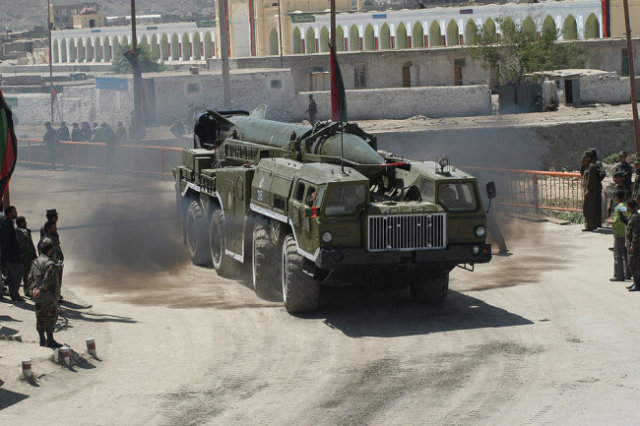On March 24, 1962, by a resolution of the Council of Ministers of the USSR, a single-stage liquid-fueled ballistic missile for operational and tactical purposes, the R-17, was adopted. In NATO countries, it was called Scud B.
The date of the beginning of the development of the rocket can be considered January 10, 1958. Then, at the initiative of a group of SKB-385 employees, supported by chief designer Viktor Makeev, it was decided to create drawings and a layout of a promising rocket launcher that was to replace the aging R-11. The idea was born after the appearance of a new liquid-jet engine created at OKB-3 Research Institute-88 under the leadership of Dominik Sevruk. The proposal was supported by the general designer of OKB-1 Sergey Korolev.
After coordination with the military, on April 1, 1958, a resolution was issued by the Central Committee of the CPSU and the Council of Ministers of the USSR on the development of the R-17 missile with a firing range from 50 to 240 kilometers.
While the design was going on, the engine of an even more perfect design arrived in time. It was made in OKB-5. Unlike the Sevruk engine, it had a higher thrust, which allowed to increase the flight range.
Initially, the missile was designed for a nuclear warhead with a capacity of at least 5 kilotons. But a little later, a more powerful charge appeared - up to 10 kilotons. In addition, it was much smaller in mass.
Also, from the very beginning, the P-17 was designed as part of a mobile complex. It was decided to create it on a caterpillar track. The self-propelled vehicle ISU-152, developed during the Great Patriotic War and proved its reliability and cross-country capability, was chosen as the platform. Several complexes were shown at a military parade on Red Square even before they were put into service (namely, on November 7, 1961). However, a few years later, the P-17 began to be placed on a four-axle wheeled all-terrain vehicle MAZ-543P.
Interestingly, the R-17 was originally manufactured only for a nuclear charge. This was due to the fact that the model could not boast of high accuracy, which means that it needed a fairly large area of damage. However, with the improvement of guidance and orientation systems, missiles with chemical and high-explosive charges began to be made. At the same time, the launch range was brought up to 300 kilometers.
By the way, the P-17 has become a marketable commodity in the arms market. Several countries have bought a license for its manufacture.
The rocket was quite often used in military conflicts. Therefore, its NATO name ("Scud") was often heard in news releases around the world.
Here, in short, is the "combat path" P-17. 1973 - the "Doomsday" war, used by the Egyptian army. 1980-1988 - Iran-Iraq War. It was used by both sides, more than 600 launches were made. 1979-1989 - the war in Afghanistan. The Soviet army used more than 2,000 missiles. 1991 - the Gulf War. Iraq has launched about 90 launches against Israel and Saudi Arabia. 1994 - the war in Yemen. The P-17 was used by both the government army and the separatists. The number of launches is unknown. 1999-2001 - the second "Chechen" war. 250 missiles were used. 2015 - Saudi Arabia's war with the Houthis. The latter launched about two dozen P-17s. 2020 - the second Karabakh war. Armenia has launched two missiles on Azerbaijani territory.
In Russia, the Elbrus complex, including the P-17, has been removed from service. However, 11-12 countries still have it in their arsenal.
Oleg Galitsky

